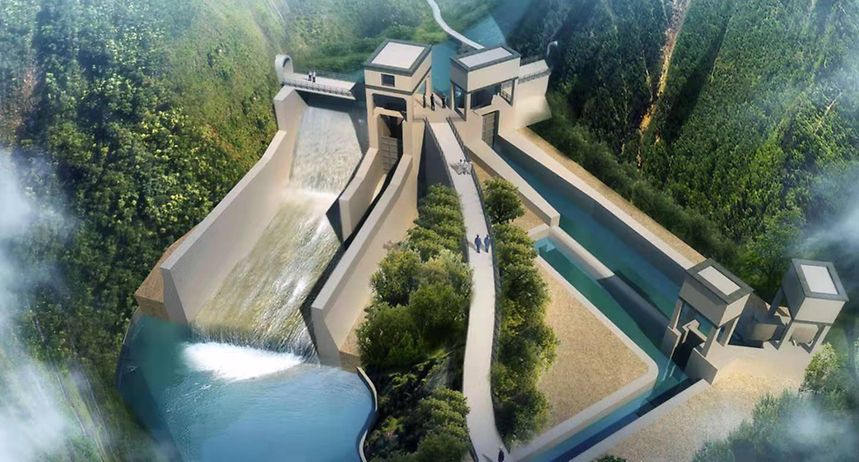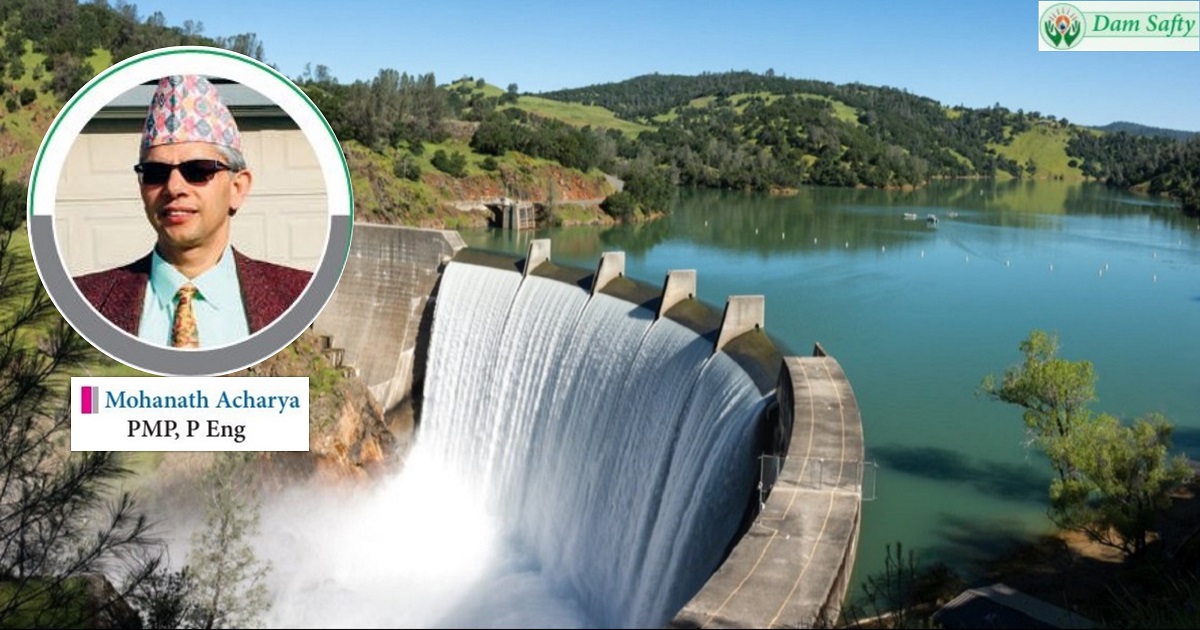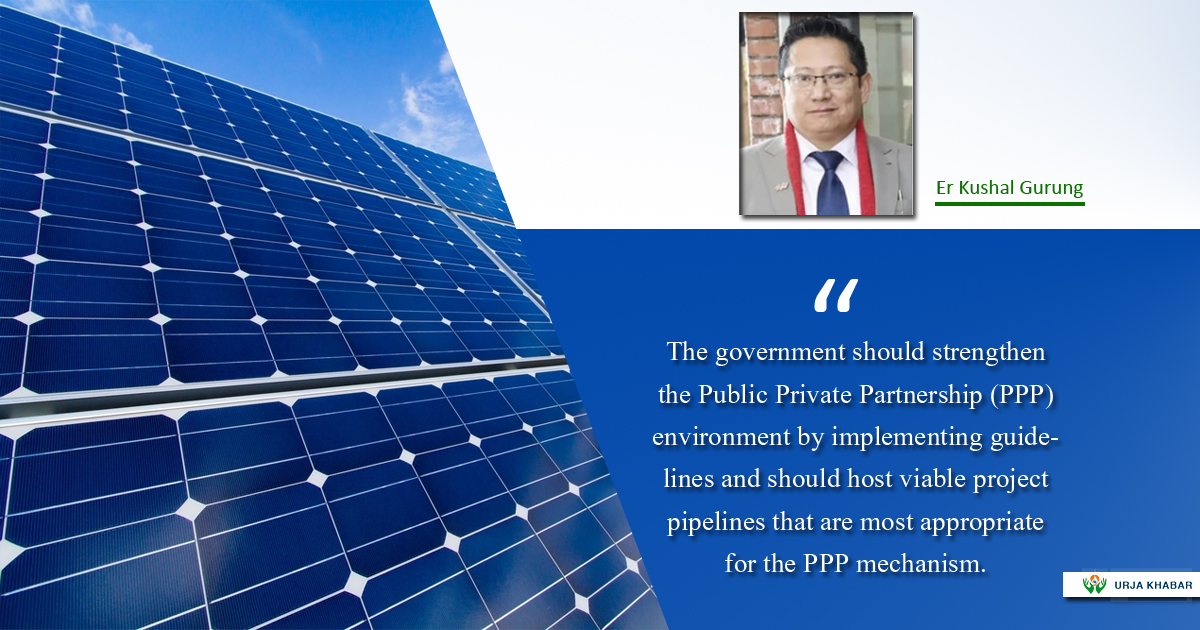Energy Update
Overreliant on hydropower

Kathmandu: Let’s picture a hypothetical situation. The year is 2050, and Nepal generates 100 percent energy from hydropower. Nepalis cook food on electric stoves, commute to work by electric vehicles, and industries run day and night on hydroelectricity. However, the same year sees an extended summer and multiple heat waves.
Major rivers in Nepal go dry and power generation comes to a halt. Drought-induced power outages affect the daily routines of millions of households and thousands of businesses across Nepal, including hospitals, communications, and education.

This hypothesis is unlikely to prove true, as Nepal generates only 2 percent of its energy from hydropower and plans to meet 15 percent of its energy demand from clean energy sources by 2030. Considering an uncertain future climate, the objective of the hypothesis above is to enlighten stakeholders and policymakers about the worst-case scenario of overreliance on a single energy generation sector. In 2050, even if industries and transportation sectors don’t get all of their energy from hydropower, households will depend on hydroelectricity to warm and cool their homes, cook their foods and mostly charge their electric bikes and vehicles.
The danger will be clear if Nepal continues to pursue its current policies and plans to generate electricity from hydropower without diversifying electricity sources. Nepal’s updated Nationally Determined Contribution, submitted in December 2020, says it will generate 5,000 megawatts of electricity from hydropower using its own financial and technical resources by 2030. The conditional target is to generate 15,000 megawatts by 2030, of which 5-10 percent will come from solar, wind, and bioenergy sources. This shows how serious Nepal is about generating electricity from hydropower.

Energy sources in Nepal
Nepal currently meets most of its energy demands from traditional sources. Firewood is the main source of energy (75 percent), followed by petroleum (9.24 percent), animal waste (5.74 percent), agricultural residue (3.53 percent), electricity (2 percent), and other renewable resources (0.48 percent). However, 99.8 percent of the country’s electricity comes from hydropower.
The country generates 2,191 megawatts of electricity from hydropower. Ninety-three percent of the total population had access to electricity in 2022. One research shows a person needs 20,833 kilowatt-hours of energy to live a good and healthy life.
This energy not only includes electricity but also transport, heating and cooking. However, per capita energy consumption in Nepal was 1,530 kilowatt-hours in 2021, far below normal consumption. This explains the temptation to generate more electricity from hydropower, which seems more convenient for Nepal to improve economic and overall well-being of people. Such a temptation is fine as long as the country can ensure a reliable supply of energy from hydropower. However, there is a huge question about the reliable supply of electricity in the future because of a changing climate.
Climate troubles
Many river basins across Nepal are snow-fed, and they will experience severe impacts as a changing climate will hit the glaciers hard. Furthermore, climate change modelling for Nepal shows average annual precipitation is likely to rise by 2-6 percent in the short term (2030) and 8-12 percent in the long term (2050). Meanwhile, mean annual temperatures are predicted to rise by 0.9-1.1 degrees Celsius in the short term (2030) and 1.3-1.8 degrees Celsius in the long term (2050). The projected change in climate will impact the major watersheds in Nepal and ultimately disrupt electricity generation in both rainy and dry seasons.
Nepal might retrofit the existing hydropower plants and build strong ones to withstand massive floods and glacial-lake-outburst floods (GLOFs). The resilience of hydropower plants against massive floods and GLOFs can be increased by investing in climate-smart power plants, early warning systems and good hydro meteorological data collection. However, generating sustained electricity during prolonged drought will be a significant challenge. Many hydropower plants in Nepal are run-of-the-river and are highly susceptible to power generation during the dry season compared to big dams. Even the hydropower plants with dams will have severe consequences during the prolonged droughts that we witnessed globally in the last couple of years.
Global impacts
One study says 61 percent of all global hydropower dams will be at extreme risk of droughts, floods, or both. The International Energy Association (IEA) warns that climate change poses a huge threat to the global ambition of generating electricity from clean sources, as hydropower alone contributes to 16 percent of global electricity generation. The threats are already observed in multiple regions of the globe. Disruptions in electricity generation from climate change-induced droughts made global news in 2022.
The United States, Brazil, and China already experienced the worst impacts of drought on electricity generation last year. Electricity generation in California in 2021 was 48 percent below the 10-year average of 2011-2020. Similarly, Hoover Dam, one of the largest man-made reservoirs, normally generates 2,080 megawatts of electricity. But climate change-induced drought caused a 50 percent decline in electricity generation in the summer of 2022.
Droughts in China dried reservoirs in many provinces, and electricity generation plummeted. Sichuan, the largest hydropower producing province in China, witnessed a nearly 50 percent drop in electricity generation, leading to acute power shortages in 2022. Similarly, prolonged drought events in the past years have substantially impacted the hydroelectricity generation in Brazil. Severe climate-induced droughts are expected to reduce the river flows by 38 to 57 percent, sharply decreasing the electricity generation from hydropower plants.
Lessons for Nepal
Although there is no exact record and information on the impacts of climate-induced longer hot seasons or drought on electricity generation in Nepal, electricity generation from hydropower is expected to decrease with rising temperatures. The experiences from other countries tell us that sooner or later, we will also be experiencing a severe power shortage when hydropower fails to function at its optimum level.
The diversification of electricity generation is key to reducing the impacts of climate-induced drought on electricity generation from hydropower. It is even crucial for Nepal as the country gets a large portion of its electricity from hydropower. This shows the energy vulnerability of Nepal to a changing climate. Additionally, Nepal plans to generate less than 5 percent of electricity from other clean sources, including solar and wind energy by 2030.
There is no scientific recommendation on the proportion of electricity generation from different clean sources to make the country’s electricity generation resilient. However, a mere 5 percent of electricity generation from clean sources is inadequate to increase the resilience of its electrical systems to climate change. So Nepal should not rely just on hydropower as it might backfire in the long run.
Conversation

- Info. Dept. Reg. No. : 254/073/74
- Telephone : +977-1-5321303
- Email : [email protected]













